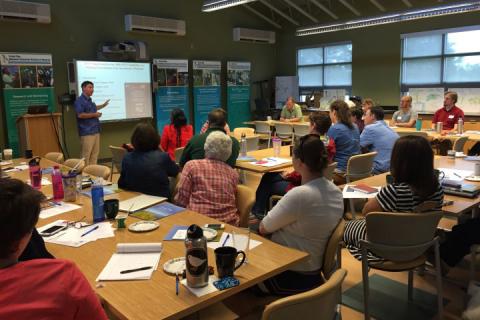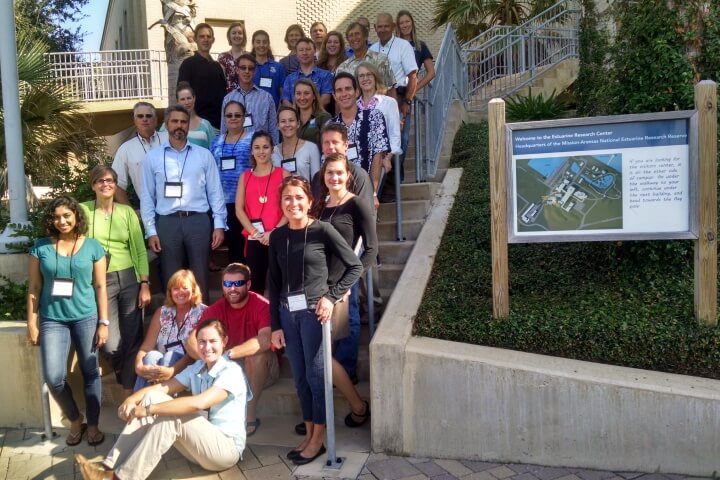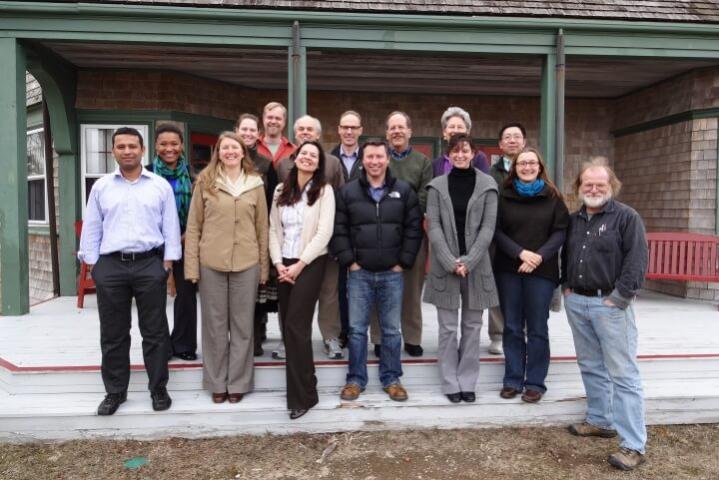
Coastal blue carbon is a newly recognized ecosystem service provided by coastal wetlands—including seagrass beds, mangroves, and salt marshes—to capture and store carbon. When coastal wetlands are degraded or destroyed, they release these greenhouse gases into the atmosphere. Bolstering awareness and valuation of blue carbon could lead to increased prioritization of coastal conservation and restoration projects, and increase public and private funding for these types of projects. Moreover, coastal managers are now being asked to consider the greenhouse gas implications of their decisions, and Gulf Coast National Estuarine Research Reserves have recently identified blue carbon as a priority topic.
This project developed a Gulf Coast blue carbon network as a platform for sharing information and coordinating efforts to develop blue carbon tools and projects in the region. End users for the project included reserve staff, local government, restoration practitioners, researchers at local academic institutions, non-profits, resource managers, and others involved in habitat protection and restoration in the Gulf region. The goal was to support the development of projects that advanced local understanding of blue carbon science and to pilot ways to leverage blue carbon’s value to fund coastal wetland restoration and conservation.

